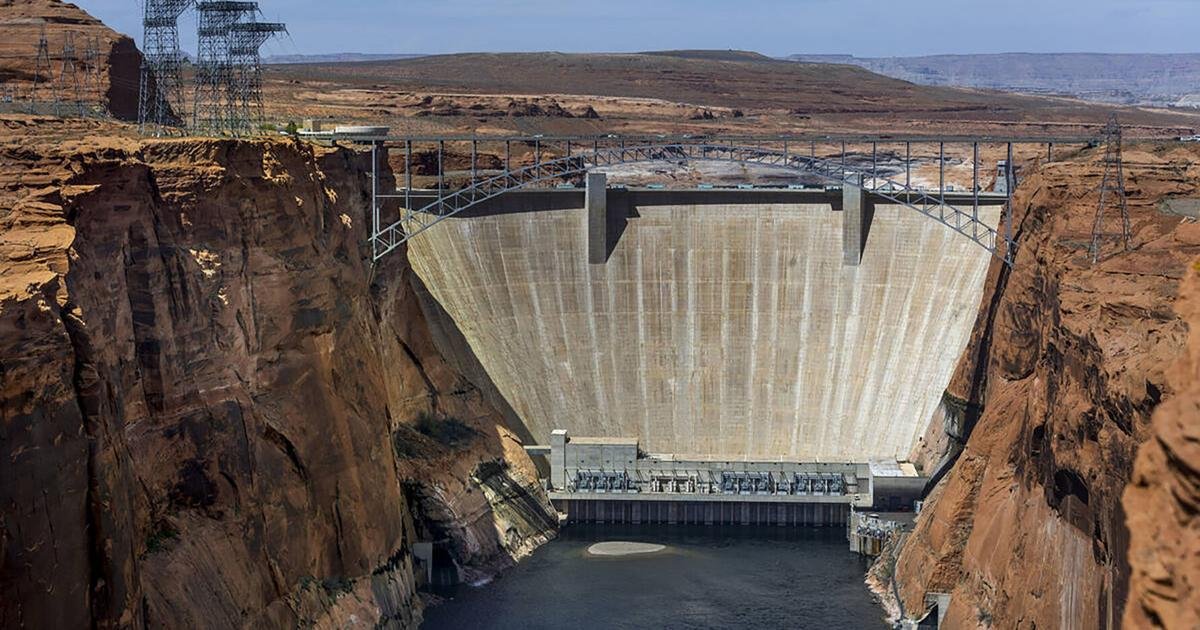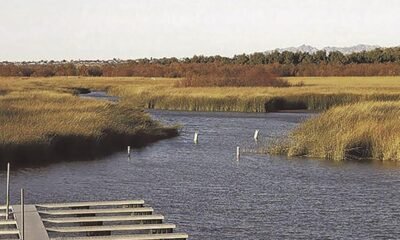Usa News
Arizona Water Chief Urges Targeted Release of Colorado River Water Based on Current Availability

In a significant development for the Colorado River Basin, Tom Buschatzke has proposed a new method for managing annual water releases from Lake Powell. His suggestion aims to allocate water to the Lower Colorado River Basin states — Arizona, California, and Nevada — based on a fixed percentage of the average “natural flow” over a three-year period.
This proposal marks a departure from traditional policies that have often been criticized for contributing to unsustainable water usage amid dwindling supplies. Water experts, including Eric Kuhn and David Wegner, assert that Buschatzke’s methodology could enhance the river’s health and align water consumption with available resources.
The new approach would calculate water allocations more dynamically, reflecting real-time supply data rather than historical forecasts. However, the plan’s effectiveness hinges on determining the precise percentage of available supply for distribution, necessitating negotiations among the states involved.
Water officials perceive this proposal as a potential resolution to ongoing disputes between the Upper Basin states — Colorado, New Mexico, Utah, and Wyoming — and their Lower Basin counterparts. It is one of the first openly discussed proposals in negotiations that have otherwise remained confidential.
The proposal was presented during a Tuesday meeting in Phoenix, where stakeholders discussed sustainable solutions to the ongoing water crisis threatening the region. Early reactions have generally been favorable, though comprehensive details require further clarification.
Brenda Burman, General Manager of the Central Arizona Project, raised concerns about the Lower Basin potentially receiving less water than stipulated under the Colorado River Compact by 2026. There is a fear that the Upper Basin states may not meet their obligations to supply the Lower Basin with at least 82.5 million acre-feet over a decade.
Buschatzke’s plan would shift away from past practices where water releases depended on optimistic forecasts, often leading to inflated expectations of water availability. The proposed system focuses on actual observed flows, which would effectively mitigate historical conflicts between the two basins over resource allocation.
The potential breakthrough has garnered cautious optimism among Upper Basin officials as well. Becky Mitchell, Colorado’s river commissioner, expressed support for the new approach, emphasizing that any adopted framework must ensure equitable and sustainable water usage throughout the entire river system.
Critics believe that to solidify any changes, the right balance in the proposed allocation percentage must be established. Failure to find this “sweet spot” could lead to either excessive cuts in water rights or inadequate supplies for the Lower Basin.
Experts like Fleck and Kuhn believe this proposal establishes a crucial opportunity for all stakeholders to think beyond provincial interests and focus on the broader implications for the Colorado River Basin’s future. If the states can collaborate effectively, this could represent a transformative shift in how water resources are managed across the region.

















